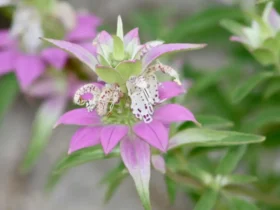Alstroemeria, also known as the Peruvian Lily or Lily of the Incas, is a remarkable flowering plant that captivates gardeners and flower enthusiasts with its vibrant colors and delicate blooms. Originating from South America, particularly the Andes region, Alstroemeria has gained popularity worldwide for its long-lasting flowers, unique patterns, and versatility in floral arrangements. In this article, we will delve into the enchanting world of Alstroemeria flowers, exploring their characteristics, symbolism, cultivation, and the joy they bring to gardens and bouquets.
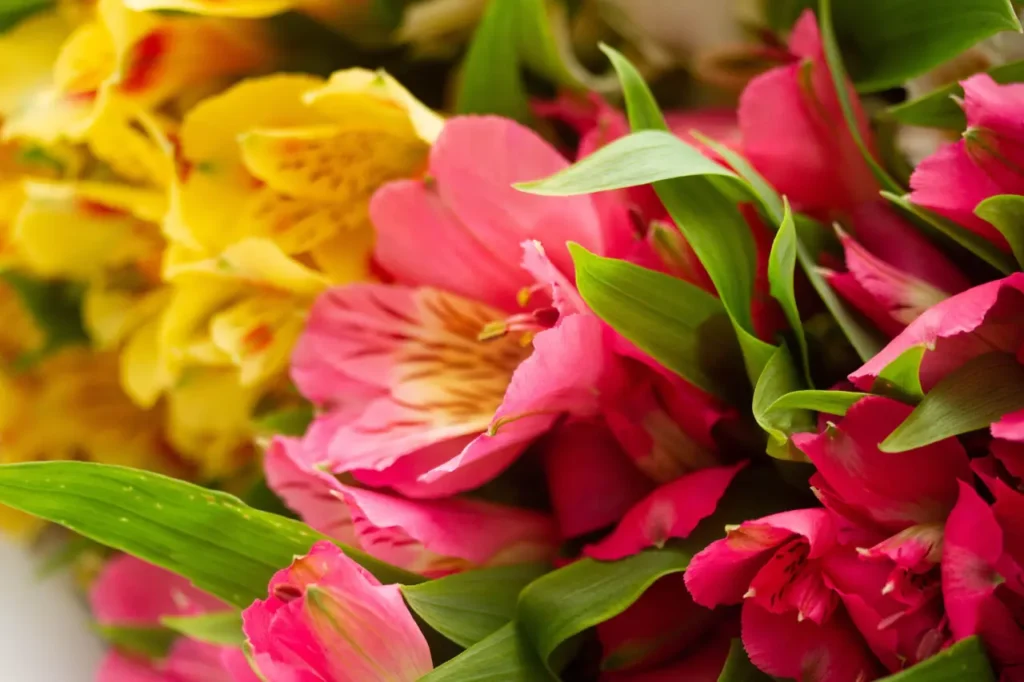
Appearance and Symbolism
Alstroemeria flowers are known for their intricate and showy appearance. Each stem produces clusters of blooms that consist of several individual flowers, each with six petals. The petals exhibit a wide range of colors, including shades of pink, yellow, orange, red, purple, and white. One distinctive feature of Alstroemeria flowers is their marked contrasting patterns and markings, often resembling freckles or stripes. This unique characteristic adds depth and visual interest to the blooms, making them truly captivating.
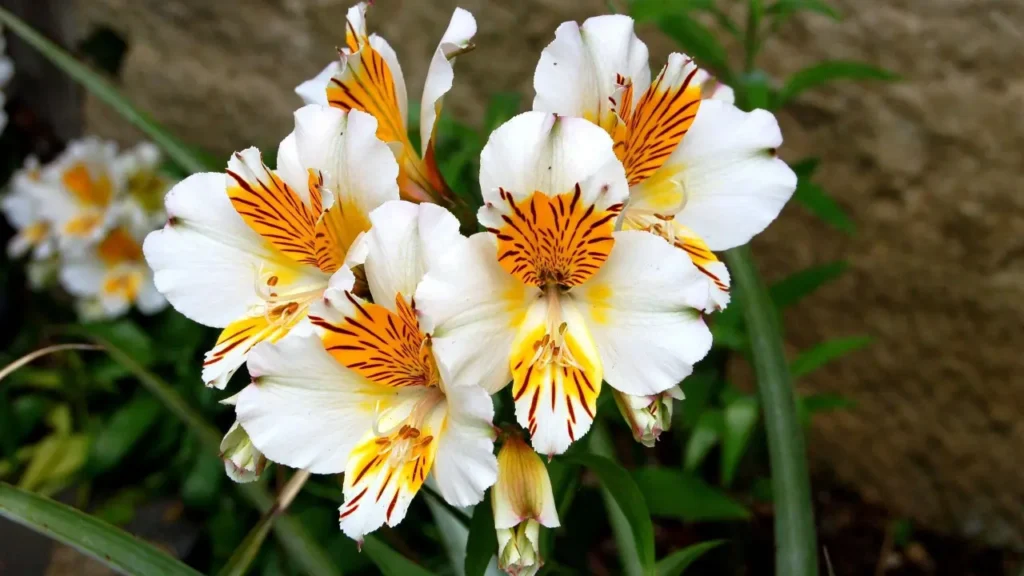
The symbolism associated with Alstroemeria varies across cultures, but it is often associated with friendship, devotion, and wealth. In some traditions, it is also considered a symbol of enduring friendship or the bond between two individuals.
The color of the Alstroemeria flowers
Alstroemeria flowers, also known as Peruvian lilies or lily of the Incas, exhibit a wide range of colors. These beautiful flowers are known for their vibrant and eye-catching petals. The color palette of Alstroemeria flowers includes:
- Pink: Alstroemeria flowers come in various shades of pink, ranging from soft pastel pinks to vibrant and hot pinks.
- Orange: Orange Alstroemeria blooms can range from warm and bright oranges to deep, fiery shades.
- Yellow: Alstroemeria displays shades of yellow, including soft buttery yellows, sunny yellows, and vibrant golden yellows.
- Red: Alstroemeria can showcase rich and intense red petals, adding a bold and captivating touch to floral arrangements.
- Purple: Some Alstroemeria varieties offer petals in shades of purple, ranging from delicate lavender to deep and royal purples.
- White: Alstroemeria flowers can have pristine white petals, creating a clean and elegant appearance.
- Bi-color and Speckled: Certain Alstroemeria cultivars feature bi-color or speckled petals, combining two or more colors or displaying unique patterns. For example, you may find varieties with striped or spotted petals, adding a touch of whimsy and intrigue.
These are some of the most common colors found in Alstroemeria flowers, but it’s worth noting that there are also hybrid varieties available that may exhibit additional colors or color combinations. With their vibrant hues and striking patterns, Alstroemeria flowers bring beauty and cheerfulness to gardens and floral arrangements.
Cultivation and Care
Alstroemeria is a relatively low-maintenance plant, making it suitable for both novice and experienced gardeners. Here are some key cultivation tips:
- Sunlight and Location: Alstroemeria thrives in full sun to partial shade. Choose a location in your garden that receives at least 4-6 hours of sunlight per day.
- Soil Conditions: Alstroemeria prefers well-drained soil with organic matter. Ensure the soil is loose and fertile, allowing for proper root development.
- Watering: Keep the soil evenly moist, but avoid overwatering, as excessive moisture can lead to root rot. Watering once or twice a week, depending on the weather and soil conditions, is usually sufficient.
- Mulching: Apply a layer of organic mulch around the base of the plant to retain moisture, suppress weed growth, and regulate soil temperature.
- Fertilization: Use a balanced fertilizer or compost in early spring to provide nutrients for healthy growth and abundant flowering.
- Staking and Support: Some taller varieties of Alstroemeria may require staking to support the stems and prevent them from bending or breaking.
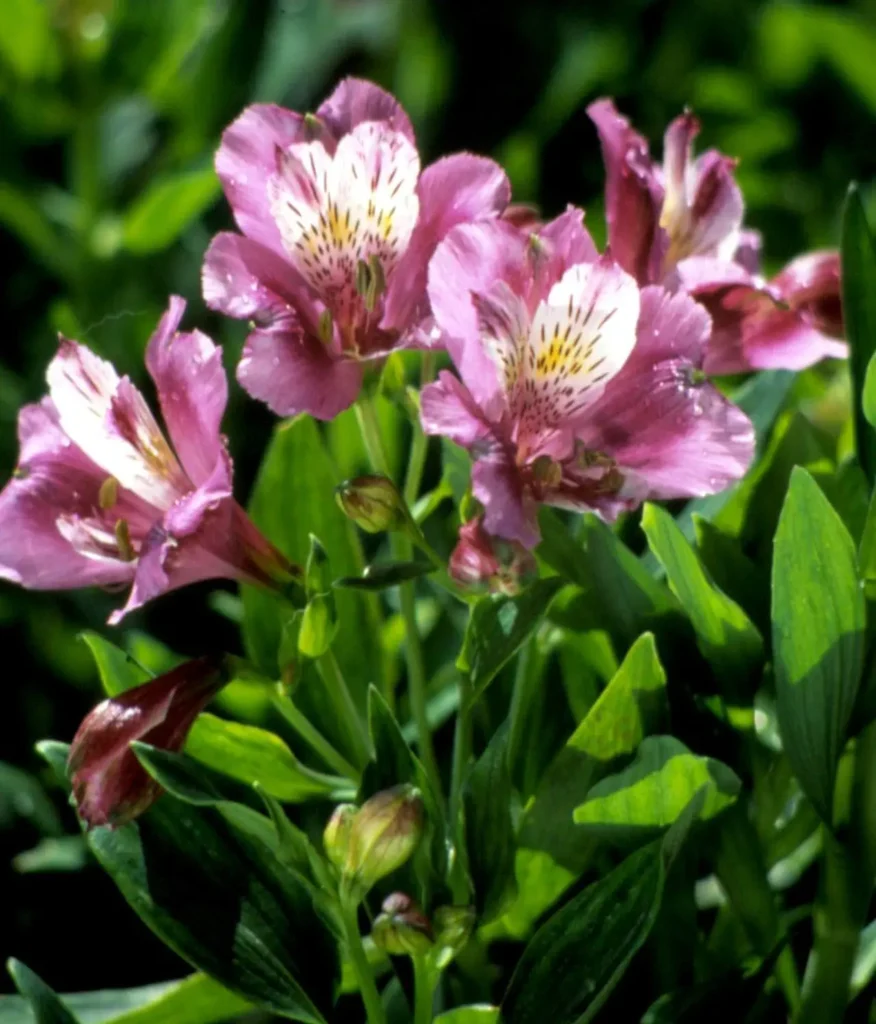
Floral Uses and Arrangements
Alstroemeria flowers are highly valued in floral arrangements due to their striking appearance and long vase life. They make exquisite additions to bouquets, centerpieces, and flower arrangements, adding vibrant colors and texture. The sturdy stems and long-lasting blooms make them ideal for both fresh and dried flower arrangements. Alstroemeria flowers can be combined with other blooms or used as focal points, bringing a touch of elegance and charm to any floral design.
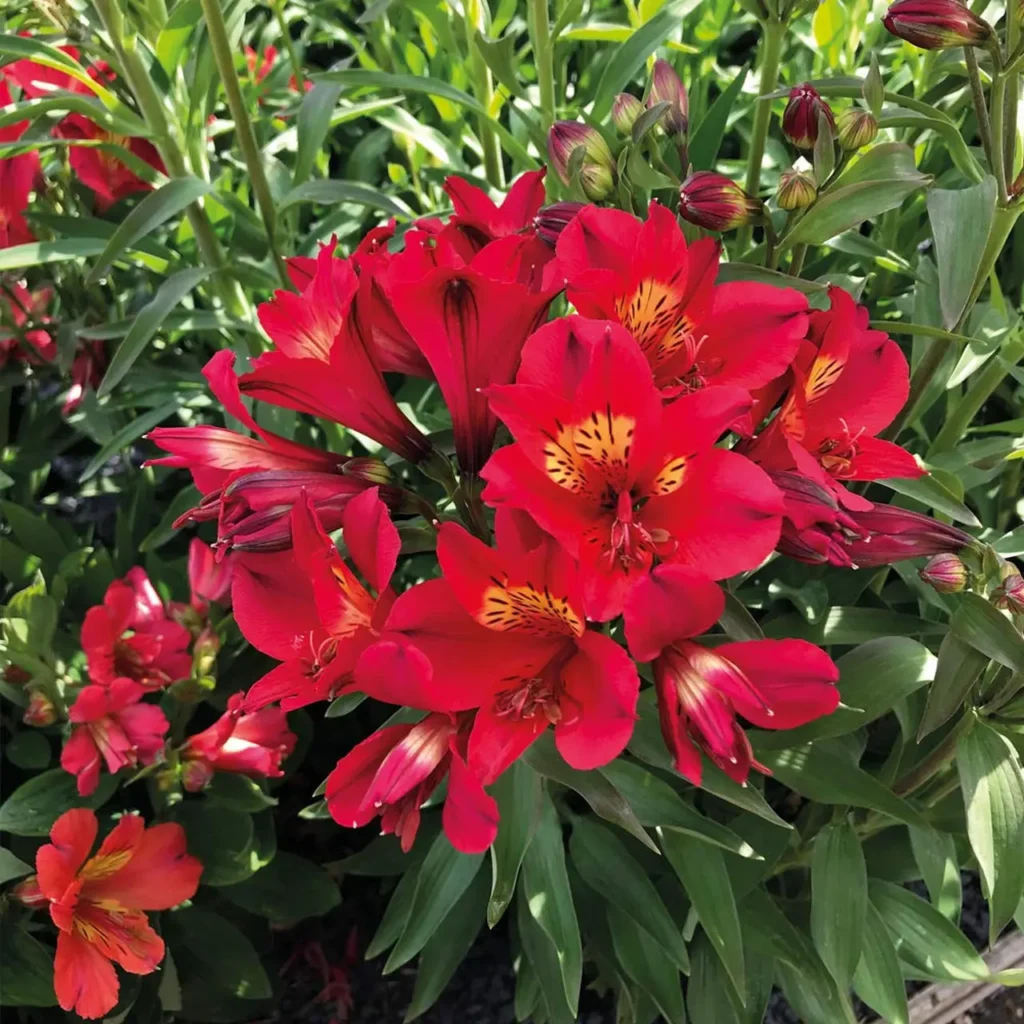
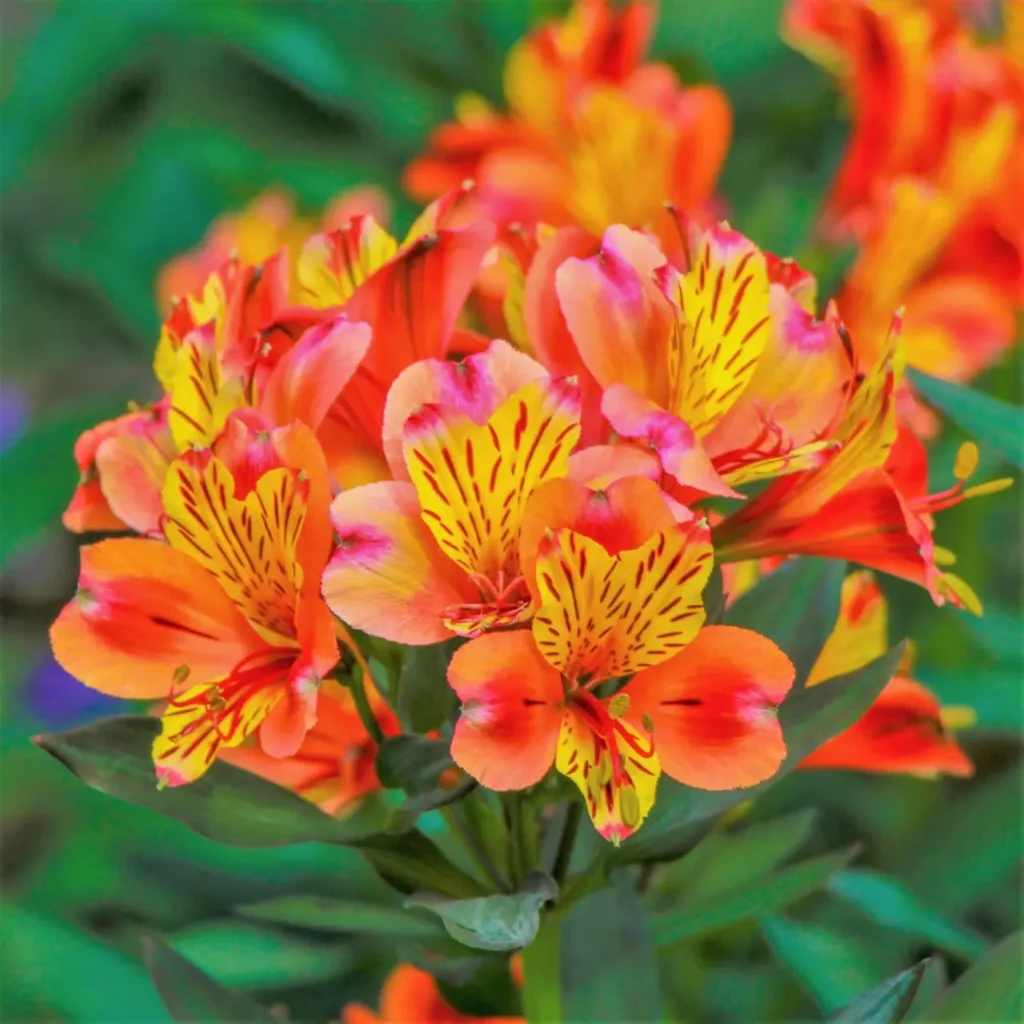
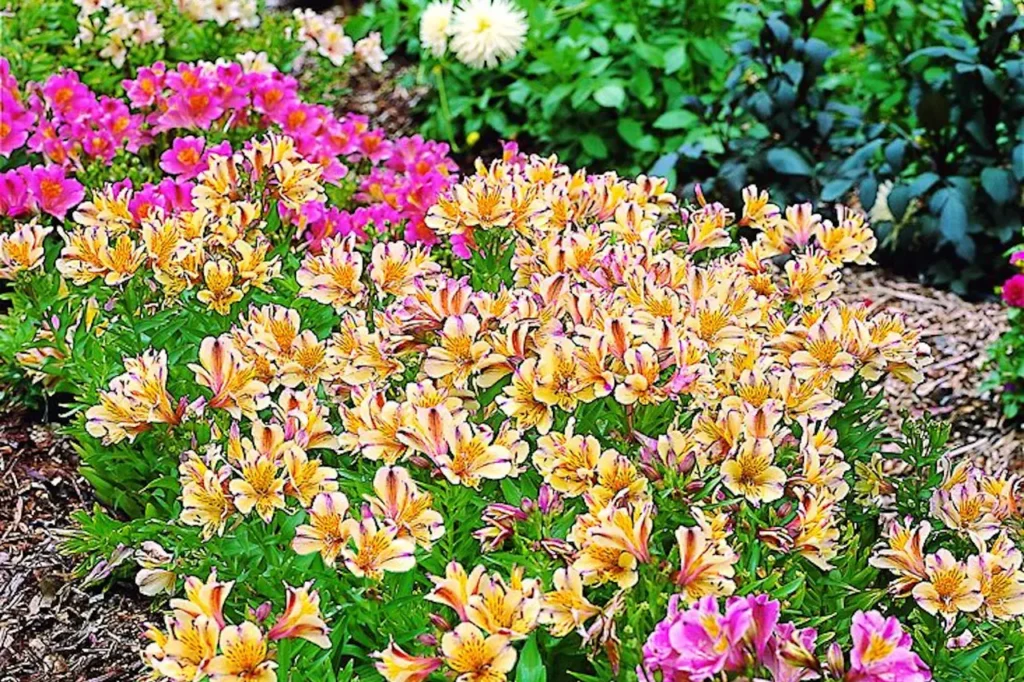
Alstroemeria flowers are truly nature’s masterpiece, captivating us with their exquisite colors, patterns, and symbolism. From their origin in the Andes to gardens and bouquets worldwide, Alstroemeria continues to enchant us with its delicate beauty and long-lasting blooms. Whether adorning a garden bed or gracing a vase, these stunning flowers add a touch of elegance and vibrancy to any space, making them a cherished choice for both gardeners and flower enthusiasts. With their captivating allure and versatility, Alstroemeria remains a cherished favorite in the world of floral beauty.
